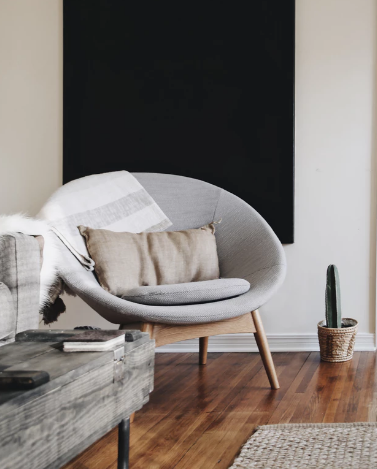Properly Painting Interior Trim

The interior trim highlights a room and improves its dimensions. Unintentional dents and nicks will distract people from the special features of a room. Maintaining your interior trim appearing like new can sound like a lot of work. Damage to the casing and the base is unavoidable, mostly caused by vacuuming.
When you are applying paint to a wood base or window frame, the key to a successful job is proper reparation; having the right tools for the job and superior finish paint. You can follow the subsequent steps to renew your interior trim for an excellent lasting finish.
Preparation
The initial step when applying paint to your interior trim is good cleaning. The cleaning applies to areas that are extremely greasy and dirty or paint that’s in good condition. A clean interior will maximize the adhesion of the paint. If the paint is cracked, peeling or otherwise requires sanding, cleaning can get done later.
The best product to use in cleaning your interior trim before painting it is trisodium phosphate. It is a heavy grease cutter, but it can also be harmful to surfaces that don’t need painting. However, the same cleaning methods used when cleaning walls before painting are still applicable to the interior trim. Begin at the bottom and proceed upwards. Rinse the surfaces well and allow them to dry before you proceed.
Another method is to utilize a de-glosser like Paso. Paso is a perfect product you can use in cleaning the surfaces and dull your sheen as well. It is used mostly on trim that’s in good condition and needs little preparation.
Masking And Covering
The degree of masking and covering depends mainly on the extent of sanding and your competence with your paintbrush. If your interior requires lots of scrapping and sanding, then cover all your furniture and floors with lightweight plastic before you begin sanding. If your the sanding requirements are minimal, drop a piece of cloth on your working space.
You can use masking paper around the base of the door frames or in places where you require some additional protection. You can protect the floors using paper and masking tape to prevent splatters and drips to expedite your brushing when applying paint to your base trim.
The Right Brushes and Paint
Alkyd paints were more preferred earlier due to their high-quality adhesion, finish and their ability to withstand abuse. However, today’s acrylics are popular for a few reasons: Their ease of application and clean up; their appearance and durability, they are gentler to the surrounding, and they present minimal health risks since their fumes are less toxic.
When selecting paint for your trims choose either a gloss or satin finish. These types of finish will give your trim a shiny feature that will assist it to outshine flat-finished and wallpapered walls. Besides its enhanced durability, the enamel paint makes the surfaces more cleanable.
For quality work, select the right brushes that are suitable to the size of your trim. If you are replacing an old trim or installing a new one, paint your trim first, mount it, and then apply finish once you install it. Nevertheless, if you are repainting an old trim, you will require masking of the nearby ceilings or walls using a painter’s tape.
Apply the Paint Properly
Start painting your interior trim adjacent to the ceiling and proceed to the base. Paint window and door frames before you go to the baseboards. For a quality job, utilize a 1-1/2 angled paintbrush on a narrow trim and a 2 inch or bigger flat brush on the wide areas like big baseboards.
Begin by moving in the edges and then end with wide flat regions. When moving into the walls, be careful and use a dry paintbrush to reduce paint penetrating under the tape.
When painting the wide interior trim start around 3 to 4 inches from one corner and paint towards another corner. Utilizing broad strokes, paint in the opposite direction to evenly spread the paint. Begin the next part 3 to 4 inches outside where you ended and then paint backward headed to the wet edge.
Utilize wide strokes with the paintbrush to balance any heavy parts and create an even finish. Work in arts while keeping a wet edge. Almost all enamel paints will need two layers. Allow every layer to dry before proceeding to the next.
After your paint has completely dried, take off the tape and brush the walls if need be. If there’s any paint buildup on the edge of the tape utilize a sharp knife and cut along the edge carefully before removing your tape.
